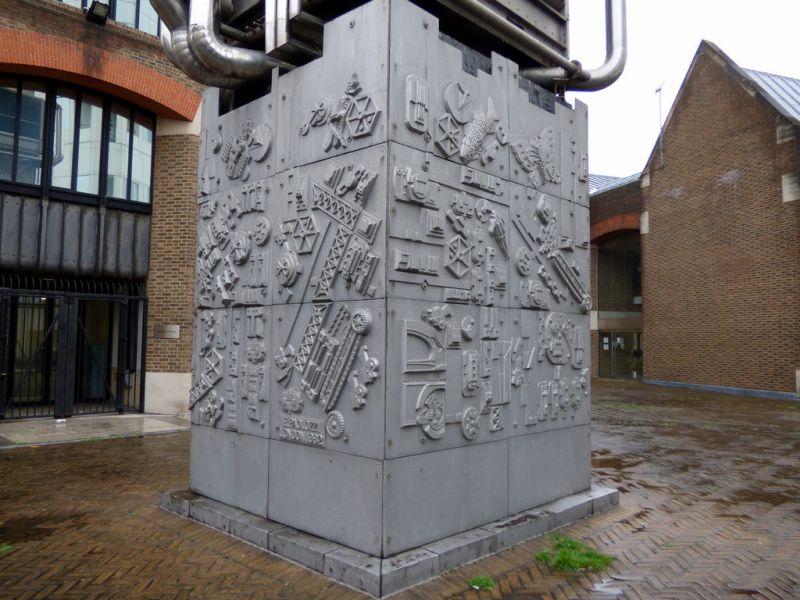Question of the Day: Cooling Tower Volume
Published on by Industrial Water Research, research@tallyfox.com in Academic
How do you estimate or determine the volume of a cooling tower?
|
Taxonomy
- Cooling Boiler & Wastewater
- Industrial Water Treatment
- Cooling Systems
- Industrial Water Managment
- Cooling tower maintenance and repairs
10 Answers
-
Some mentioned decay of chloride with the tower blow-down closed. Most water has at least some chloride in it already, and if under some heat load, the evaporation during the test interval will also increase the chloride further than the spiked amount. It is a valid means for the calculation as long as the test interval is short, but if you already have something like we do ~ 250 ppm chloride in the source water, and are running 3-4 cycles of concentration on a system that is north of 250,000 gallons, you are going to need a considerable amount of salt to be able to read that. I would suggest using a tracer that is virtually not present in the source water, and hold the level in the tower basin very constant during test interval. Molybdate ion is usually a good choice because it also will enhance anodic corrosion reaction of steel, although you might actually lose some of the molybdate ion to passivating reactions, depending on how active corrosion is in the system.
-
A trace test is good for testing volume. It depends how precise you need to be in your estimate.
-
You mean the CT hold-up?
-
The question is not clear. Please confirm any of the followings
- Total Volume of Cooling tower
- Volume of cooling tower for the delta T drop in temperature
- Volume of water in Cooling tower.
After confirming your requirement question will be answered.
1 Comment
-
Let's say volume of water in cooling water system or system volume. What is your advice ?
-
If you are just looking at the volume of the cooling tower, the easiest way is to subtract the operating weight from the shipping weight and divide by 8.345 to get gallons.
-
PTSA volucheck 1 is excellent, LiCl standard is good but requires a lab test, Molybdate standard can work in the field
-
Use NaCl and test for Cl along the same lines as mentioned below for Borate. With BD closed, also determine rate of decay and relate that to drift losses as well as possible valve leakage.
1 Comment
-
my only problem on Chlorides is the poor end point, accuracy is tough to achieve
-
-
A shoot-from-the-hip answer is to multiply the system recirculation rate by 10. A more-accurate answer is to use a tracer compound like Lithium.
-
The real easy way: Measure the sides, and the normal depth of water. If in meters, multiplying the three numbers together arrives at cubic meters volume. Now you must add something for the pipes, and heat exchangers, using similar reasoning. Most calculators can help you convert units to the preferred units of measure.
-
Easy way. Get a solution made of sodium perborate. Get it analyzed for Boron content and have an accurate weight of the solution. If possible, close all blowdown. Pull a system sample and then dump the contents of the container into the suction side of the cooling tower pumps. Take samples every 15 minutes for 2 hours. Analyze all 9 samples for B. This will provide you will lots of information. When the B concentration levels, that is your data point concentration to use.
ppm B (level point) - ppm B at start = ppm B increase
ppm B increase/120 = lbs/1000gal
lbs B added/ lbs B increase x 1000 = volume.
You can also continue to take samples and determine the decay rate in which you will know your total bleed rate (leaks, drift, blowdown).
You can do this with anything element that is not in high concentration in the makeup water or one of the treatments you are using.
2 Comments
-
Holding the blowdown and spiking the cooling tower water with Boron or Lithium is a good idea; but the service rep in the field may not have those tests available for field use. A reliable way is to make the shot from the hip estimated first: follow that total volume estimate with a simple field test for sodium chloride as NaCl and then spike the system with a few pounds of salt to give you enough rise in the NaCl to be seen and calculated. The change salt content of the recirculating water will give you the volume of the water. If the city water is 30 ppm at 3 cycles, there should be 90 ppm of salt in the tower water. If it is 210 ppm after adding the salt we have about 120 ppm increase. 120 ppm is right at 1 pound if chemical per thousand gallons. So if you added 5 pounds of salt, we should have 5000 gallons in the system.
Tha small amount of salt added is not enough to give a concern about corrosion, and it will be quickly removed by blowdown.
-
As a follow up to Terry's answer. When doing this test, block in the normal blowdown. The decay will then be drift and misc. water losses. The controlled blowdown can be measured by other control methods.
-
